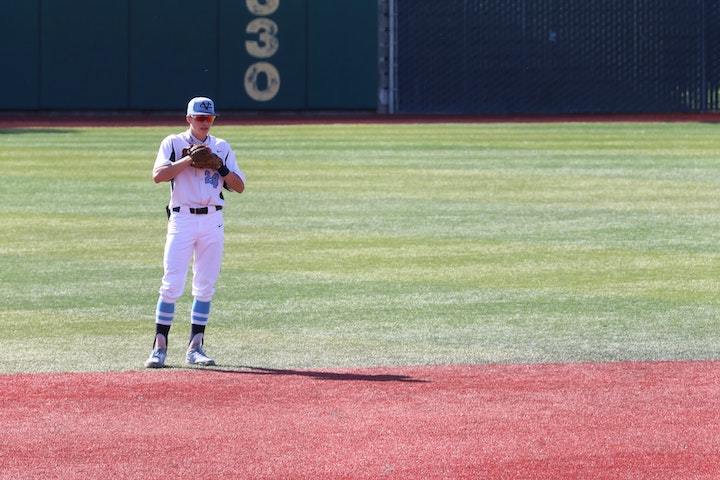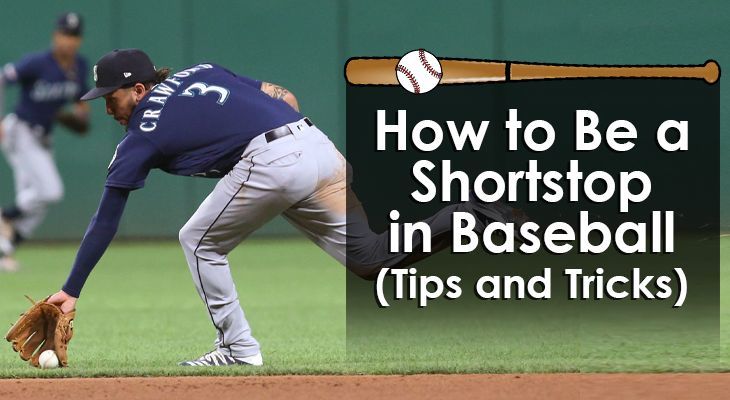The best players on a youth baseball team almost always play shortstop.
It may seem like an odd coincidence that this happens a lot, but it's not something that simply happens by chance.
The reason for this is that shortstop is one of the most important positions on the field.
In youth baseball, it may be the single most important defensive position - especially in leagues where coaches are the ones throwing the pitch.
The shortstop is the quarterback of the defense.
He makes sure that all players know what the situation is at all times.
He must call out how many outs there are. He must remind other players around him of what to do if something happens.
In a word, a shortstop is a leader.
This is why, at first, some of the best kids start by playing shortstop.
As they get older, though, players who remain at shortstop possess certain traits and skills that are necessary to play the position well.
While being a great vocal leader is essential for any successful shortstop, there are other traits most great shortstops have.
Let's take a look at all the things that make great shortstops great.
5 Traits of a Great Shortstop
1. Shortstops are great fielders
Every position on the baseball diamond must contribute on both defense and offense.
The primary focus for shortstops, though, is on the defensive side of the game.
It's acceptable if a shortstop isn't a great hitter if he is a great fielder.
Look at Omar Vizquel, one of the great shortstops of the 1990s and 2000s.
He was never considered an offensive juggernaut, with only 80 career home runs in 24 years.
However, he is one of the best fielders ever to play the game.
Shortstops must be fielders first, and hitters second.
2. Shortstops have great mechanics
In order to be great fielders, shortstops have to have excellent mechanics.
They should master the art of getting to balls, fielding them cleanly, and then throwing with power and accuracy (more on this in a bit).
Shortstop is a tough position to field because there's so much ground to cover.
They are technically responsible for covering the ground from behind second base all the way to just about third base.
While the third basemen will certainly help closer to the foul line, he often doesn't have great range to get to balls to his left.
Getting to balls requires excellent vision, great anticipation, and proper footwork.
3. Shortstops have strong, accurate arms
If you were to ask a non-diehard baseball fan which position has the best arm, many people might respond by saying the pitcher.
That would make sense on the surface, because pitchers' primary duty is to throw the ball on every play.
In reality, though, shortstops often have the strongest arm on the field.
The reason for this is that they need to throw the ball with the same accuracy and power as pitchers do, but from significantly greater distances.
The throw from deep in the hole to first base, for example, may be close to 200 feet!
The pitcher, meanwhile, only has to throw from 60 feet, 6 inches away from home plate.
To throw a baseball that far and that accurately takes a lot of arm strength.
Great shortstops can do this repeatedly without a problem.
4. Shortstops are agile
The only way shortstops will be able to do everything they must do on a play is if they're agile.
They must be able to shuffle their feet from side to side quickly.
Shortstops must be able to pursue groundballs at angles quickly.
They must be able to transition the ball from ground to glove to throwing hand quickly.
And they must be able to do all of these things in one fluid motion.
These are not easy things to do, of course - they all take lots of time and practice to perfect.
But it all starts with building up agility, flexibility and quickness.
Ultimately, shortstops must be able to make tough plays look routine.
5. Shortstops are vocal leaders
We already talked about how shortstops need to be leaders on the field.
They must be able to rally the team toward a common goal, to pick players up when they're down.
But shortstops can't just lead by example.
They can't be quiet.
They must not be afraid to be vocal and communicate to the other players on the field at all times.
It's the shortstop's job to remind all players of the number of outs and the situation throughout the game.
Shortstops must communicate with the pitcher and second baseman about who is covering second base on throws there.
He must do the same with the catcher.
Shortstops have to communicate with the 3rd baseman for position before plays.
They must talk to outfielders about which infielder will serve as the cut-off man for throws from the outfield to the infield.
The shortstop must keep everyone on task and concentrating at all times.
The only way to do that is if he's unafraid to talk and communicate loud and clear.

Roles and Responsibilities
A shortstop has a wide range of roles and responsibilities.
Here are a few of them:
1. He must keep the ball in front of him
"Keep the ball in front of you" is a popular phrase that baseball coaches use.
It's most pertinent to first basemen, third basemen, and catchers on the infield.
What it means is that it isn't as important for these positions to field a ball cleanly right away.
They can knock it down, keep it within their range to pick up, and still have plenty of time to record an out.
Shortstops don't have the same luxury since their throws travel so much further to first base.
However, the principle still applies...
A shortstop's primary job is to field every ball cleanly and throw to record an out.
But of course, that's simply not possible to do every single time.
For balls that are hit further out of their range, shortstops need to do everything in their power to keep the ball in front of them.
When balls get by them, they get to the outfield and provide runners with more time to advance on the base paths.
So, if a shortstop can't field a ball cleanly, they must try to keep it in front.
2. He must keep mistakes to a minimum
Every player will make errors, no matter how great they are.
It's just a simple fact of life.
No human is perfect, and that applies to baseball players, too.
While no one likes making errors, you're going to miss a groundball from time to time.
You're going to make an errant throw from time to time.
And that's OK.
What shortstops must do is keep the mistakes they make to a minimum.
They do this by always keeping focused and reducing what can be termed as "mental mistakes."
Shortstops have to always know the game situation and know what they're going to do if X, Y and Z happens with the next pitch.
The mistakes that aren't acceptable are ones that are made because the player isn't focused.
If the shortstop throws to the wrong bag, for example, that's a mental mistake. He didn't realize that a runner wasn't on first base, so he threw to second base.
Those types of mistake are the ones shortstops need to keep to a minimum.
3. He must communicate
This part of a shortstop's roles and responsibilities can't be understated.
Even though we've mentioned it two times already, it's worth repeating…
Shortstops have to communicate to the rest of the team.
His job is to keep everyone in line, on task, and focused on what's in front of them.
The shortstop is in charge of helping position players, and reminding players of what they must do in certain situations.
He needs to also lead by example, of course, but while in the field, he needs to talk -- and talk often.
3 Tips for a Shortstop
Here are some tips for players who want to be a great shortstop:
1. Work on your footwork
Good footwork is essential for a shortstop.
If you are not able to master footwork, then shortstop is probably not the best position for you.
Second base might be a better option, as it doesn't take the same range, but fits a similar player's body build and style.
Shortstops have to have excellent range.
They need to be able to get balls to their left and right, in front of them and behind them.
To do this, they need to be able to use great footwork and avoid stumbling over their own feet.
Running drills that have you shuffle your feet and change direction will help a lot here.
In fact, some of the drills that running backs use in football to work on their footwork may also help shortstops.
2. Work on your hand-eye coordination
The whole process from fielding groundballs to making strong and accurate throws requires great hand-eye coordination.
Balls hit your way will be coming hard, so you have to be able to read and react almost without thinking.
Once you've fielded the ball, you still have to transition it from glove to hand, almost without looking at it -- before making throws across the diamond.
To work on your hand-eye coordination, start by simply playing catch.
This can be done softly at first before increasing the intensity of the throws.
You can also take a tennis ball and bounce it up against a wall, catching it as it returns to you.
This will work on your hand-eye coordination skills.
3. Study the game
Any player at any position in any sport should study how professionals play their position.
Studying the best at their craft can help you pick up tips and tricks as you try to excel as well.
Shortstops need to do this, too, but they also must have a good understanding of the other defensive positions on the field.
Ultimately, they must be very knowledgeable about the entire game of baseball and not just their specific position.
Again, this is very similar to a quarterback in football.
A shortstop must know where everyone on the field is at all times, what their responsibilities are on each play (or pitch) and how they should react to certain situations.
This will help them be better at achieving their roles and responsibilities.
Conclusion
Shortstop is perhaps the most important defensive position in baseball.
While other players may get more notoriety, especially at the professional level, it all starts at shortstop.
Offensive feats are flashier, but reliable defense from the shortstop is what helps teams win games.
It's not an easy position to play at all.
So, if you want to be great at it, study the traits, roles and responsibilities, and tips above, and always work hard!

